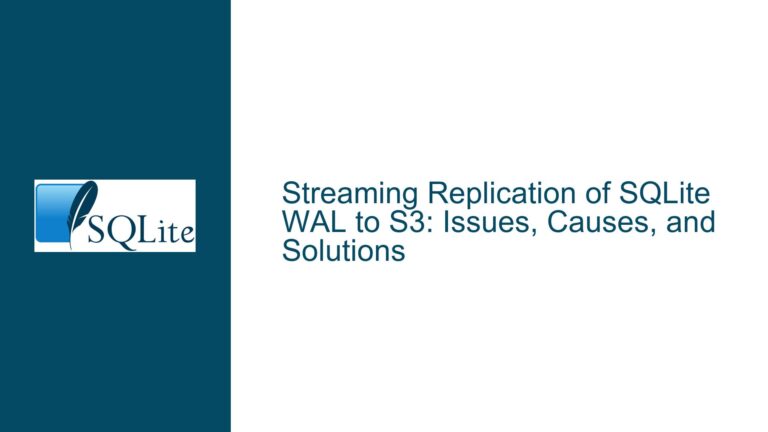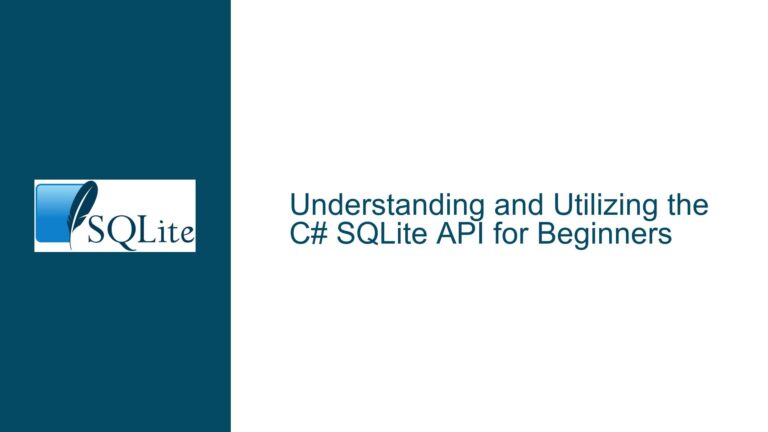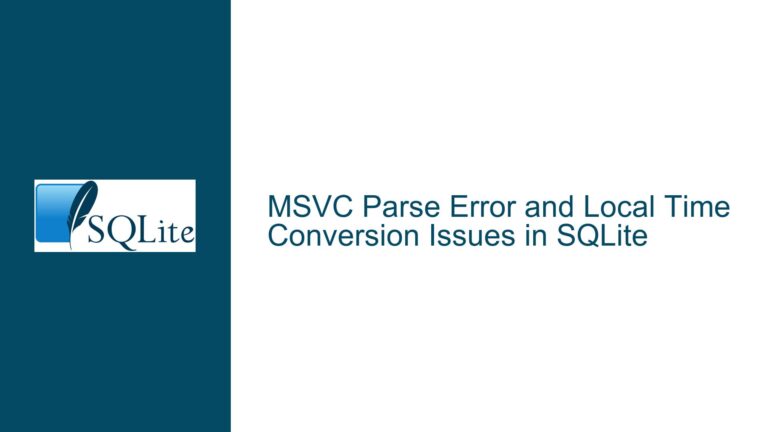Real-Time Tracking of SQLite Database Actions: Tools and Techniques
SQLite’s Lack of Centralized Change Tracking Mechanism
SQLite, unlike client-server database systems such as MSSQL, does not have a centralized server process that handles all database operations. This architectural difference means that there is no single point of control or monitoring that can track all changes made to the database by various clients. In MSSQL, tools like the SQL Server Profiler can monitor and log all database activities because the server acts as a central hub for all operations. However, SQLite operates as an embedded database, where each application or process interacts directly with the database file. This decentralized nature makes it inherently challenging to implement real-time tracking of all database actions across multiple connections.
The absence of a centralized mechanism in SQLite means that any tool or technique designed to track database actions must operate at the level of individual connections. Each application or process accessing the database must independently implement its own tracking mechanism. This limitation is a fundamental aspect of SQLite’s design, which prioritizes simplicity and lightweight operation over the centralized control features found in more complex database systems.
Using SQLite’s Built-in Tracing and Authorization Hooks
Given SQLite’s decentralized architecture, the most effective way to track database actions is by leveraging the built-in tracing and authorization hooks provided by the SQLite C API. These hooks allow developers to monitor and log the SQL statements executed by a specific connection. The two primary mechanisms for achieving this are the sqlite3_trace_v2 function and the sqlite3_set_authorizer function.
The sqlite3_trace_v2 function enables developers to register a callback that is invoked whenever an SQL statement is prepared, executed, or finalized. This callback can be used to log the SQL statements, along with additional information such as the execution time and the number of rows affected. The trace hook provides a detailed view of the database operations performed by a specific connection, making it a powerful tool for real-time tracking.
The sqlite3_set_authorizer function, on the other hand, allows developers to register an authorization callback that is invoked whenever an SQL statement is executed. While the primary purpose of this callback is to authorize or deny specific operations, it can also be used to log the SQL statements and their associated actions. By configuring the authorization callback to permit all operations and log the relevant details, developers can effectively track the database actions performed by a specific connection.
Both of these mechanisms operate at the level of individual connections, meaning that they can only track the actions performed by the connection that registered the hook. To achieve comprehensive tracking across multiple connections, each application or process accessing the database must independently implement these hooks.
Implementing PRAGMA Statements and External Tools for Enhanced Monitoring
In addition to using the tracing and authorization hooks, developers can enhance their ability to monitor SQLite database actions by leveraging PRAGMA statements and external tools. PRAGMA statements are SQLite-specific commands that provide control over various aspects of the database’s behavior. One particularly useful PRAGMA statement for monitoring purposes is PRAGMA journal_mode, which controls the journaling mode used by the database. The journaling mode affects how SQLite handles transactions and can impact the performance and reliability of the database.
By setting the journaling mode to WAL (Write-Ahead Logging), developers can improve the performance of concurrent read and write operations while also gaining better control over transaction logging. The WAL mode allows for more efficient tracking of changes, as it maintains a separate log file that records all modifications to the database. This log file can be analyzed to gain insights into the database’s activity and to identify any potential issues.
External tools can also be used to complement the built-in tracing and authorization hooks. For example, the SQLite shell provides a .timer meta-command that can be used to measure the execution time of SQL statements. This can be useful for identifying performance bottlenecks and optimizing database operations. Additionally, third-party tools and libraries that interface with SQLite can provide more advanced monitoring and logging capabilities. These tools often offer features such as real-time dashboards, detailed reports, and alerts based on specific criteria.
When implementing these techniques, it is important to consider the potential impact on performance. Tracing and logging database actions can introduce additional overhead, particularly in high-throughput environments. Developers should carefully balance the need for detailed monitoring with the performance requirements of their applications. In some cases, it may be necessary to selectively enable tracing and logging for specific connections or operations, rather than applying it universally.
Conclusion
Real-time tracking of SQLite database actions presents unique challenges due to the database’s decentralized architecture. Unlike client-server systems, SQLite does not provide a centralized mechanism for monitoring all database operations. However, by leveraging the built-in tracing and authorization hooks, along with PRAGMA statements and external tools, developers can effectively track the actions performed by individual connections. These techniques enable detailed monitoring and logging of SQL statements, providing valuable insights into the database’s activity and helping to identify potential issues. While the decentralized nature of SQLite limits the scope of real-time tracking, the available tools and techniques offer a robust solution for monitoring database actions at the connection level.





